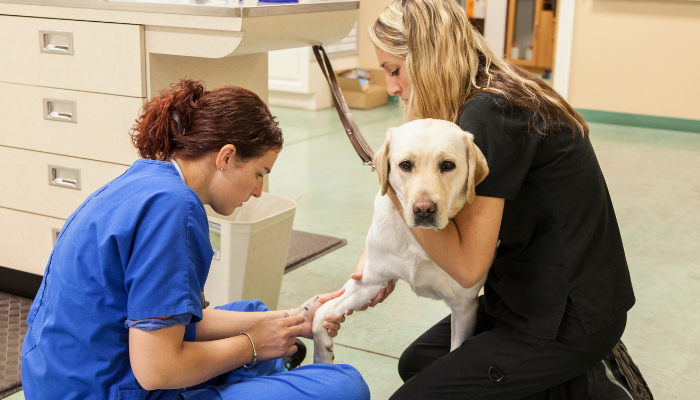
By Jamie Davis, CVPM
Mentorship programs are invaluable in veterinary practices and have become a staple in many hospitals’ recruiting and retention strategies. The benefits of mentorships go beyond just making you more attractive in a job market. They encourage diversity, foster professional growth, enhance skill development, and improve well-being and job satisfaction for both mentors and mentees. Establishing a mentorship program should be intentional with structure, a plan, and clear expectations. While this might sound like training – be clear that mentorship and training are not interchangeable terms. Here’s a step-by-step guide to creating a successful mentorship program in your veterinary practice.
Step 1: Select Program Goals
The first step in creating a mentorship program is to define the larger goals you want the program to achieve. These goals should align with the overall mission and values of your practice. Goals might include:
- Improved clinical skills and knowledge
- Promoting professional development
- Increased employee retention and satisfaction
- Building a supportive and collaborative workplace culture
Clearly defined goals will provide direction and focus for your mentorship program and ensure expectations are set and can be measured. Don’t forget to write these down!
Step 2: Determine the Mentorship Program Structure
There are several types of mentorship programs you can implement, including:
- One-on-One Mentoring: Pairing one mentor with one mentee for a personalized mentoring experience.
- Group Mentoring: One mentor works with multiple mentees, fostering group discussions and collaborative learning.
- Multiple Mentoring: Features simultaneous relationships between one mentee and several mentors, each providing support in different areas.
- Apprenticeship Mentoring: More experienced mentor focuses on teaching specific technical skills without additional personal support or career development.
- Reverse Mentoring: Less experienced employees mentor senior staff, offering fresh perspectives and new ideas.
Select the structure that best suits your practice’s needs and resources. The mentorship type you choose should also align with your larger program goals.
Step 3: Match Your Mentor(s) and Mentee(s)
Carefully matching mentors with mentees is crucial for the program’s success. Consider factors such as:
- Professional interests and career goals
- Areas of expertise and experience
- Personal compatibility and communication styles
Conduct initial meetings to ensure both parties are comfortable and have aligned expectations. Enhance this understanding with a written agreement that outlines mentor and mentee responsibilities.
Step 4: Meet to Set Expectations and Define Mentee SMART Goals
Once pairs are matched, hold an initial meeting to set clear expectations. The meeting agenda should include defining roles and responsibilities, setting the frequency and format of meetings, time commitments and start date of the program. You will also use this meeting to define the mentee’s initial SMART (Specific, Measurable, Achievable, Relevant, Time-bound) goals. Examples of SMART goals include:
- Completing a specific number of surgical procedures within a set timeframe
- Achieving proficiency in a particular diagnostic technique
- Developing and presenting a case study
- Effectively balance personal wellbeing and professional demands.
Document these goals to track progress and ensure accountability.
Step 5: Measure Outcomes
You can’t manage what you don’t measure. It is important to not only evaluate the mentees’ progress toward goals, but to quantify the return on your investment in mentorship. The check-in meetings should be at consistent intervals and your next meeting should always be scheduled before you end your current meeting. Metrics you might track:
- Skill and knowledge development
- Achievement of SMART goals
- Feedback from mentors and mentees
- Impact on job performance and satisfaction
Gathering and analyzing this data will help you understand the program’s effectiveness and areas for improvement.
Step 6: Revise Goals and Determine Status (Terminate or Continue)
Based on the outcomes and feedback, adjust as necessary. Is the goal too big or too small? Are new resources or support needed? You want to verify that the mentee’s progress is on track and if goals or career aspirations have changed. This is also your opportunity to determine whether to continue the mentorship relationship, modify mentorship type or mentor/mentee pairing, or conclude it once the goals have been met.
A well-structured mentorship program can significantly enhance professional growth, satisfaction, and retention of your veterinary team. By following these six steps, you can create a mentorship program that not only supports individual development for any role in the practice, but also contributes to the overall hospital profitability and creates a positive culture within your veterinary practice.
About the Author
